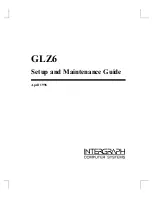
OLIMEX© 2018
A20-OLinuXino-MICRO user's manual
1.2 Target market and purpose of the board
The boards from the OLinuXino family are easy to setup and powerful. It is possible to use them in
almost any application as a host board. They are suitable for embedded programming enthusiasts,
Linux and Android gadget fans (they can just use the board as a media center or fully functional
Linux-PC, for instance) and also professionals (since its low cost makes it very good solution for
application-orientated embedded systems). The main usage of the board is software embedded
development without the urge of understanding perfectly the hardware.
The strong points of the boards are the processor speed, the small form factor and the low price-to-
productivity ratio. The presence of native SATA and Ethernet controller and built-in battery charger
circuit allows the development of a wider range of products, compared to typical embedded Linux
boards. The A20-OLinuXino-MICRO is a mature product – a lot of experience and projects are
already available such as GPIO, UART, I2C, SPI, CAN libraries and examples. The A20 chip is also
very well known and well supported (including in mainline u-boot and kernel).
Customers have full access to the technical documentation of the board. The software is released
under General Purpose License and the board is considered open-hardware – all schematics and
board design files are available to the customer under the Creative Commons Attribution-
ShareAlike 3.0 Unported License.
1.3 Board variants
The board has six board variants. The base version of the board, that comes with NO extra flash
memory, and works in the commercial temperature range is named
A20-OLinuXino-MICRO.
The
base version is usually sufficient for research and development (unless your project specifically
requires industrial temperature range and extra flash memory storage).
You might find a comparison table of the different board variants below:
Board variant
Extra
flash
Type of
flash
Size of
flash
Boot Linux from flash
memory
Operating
temperature
range
A20-OLinuXino-MICRO
No
-
-
-
0°C – 70°C
A20-OLinuXino-MICRO-IND
No
-
-
-
-40°C – 85°C
A20-OLinuXino-MICRO-e4GB
Yes
eMMC
4GB
Yes, after install script
0°C – 70°C
A20-OLinuXino-MICRO-e4GB-IND
Yes
eMMC
4GB
Yes, after install script
-40°C – 85°C
A20-OLinuXino-MICRO-n4GB
Yes
NAND
4GB
Yes, after install script
0°C – 70°C
A20-OLinuXino-MICRO-n8GB
Yes
NAND
8GB
Yes, after install script
0°C – 70°C
The different versions of the boards can be determined by the suffixes after the base A20-
OLinuXino-MICRO name, different names determine different version. The suffixes indicate three
things:
i) type of flash (“e” stands for eMMC; “n” stands for “NAND”; if there is flash memory at all)
ii) size of flash (“4GB” or “8GB”)
iii) whether the board uses industrial temperature grade components (when “IND” suffix is present)
Page 6 of 56

























